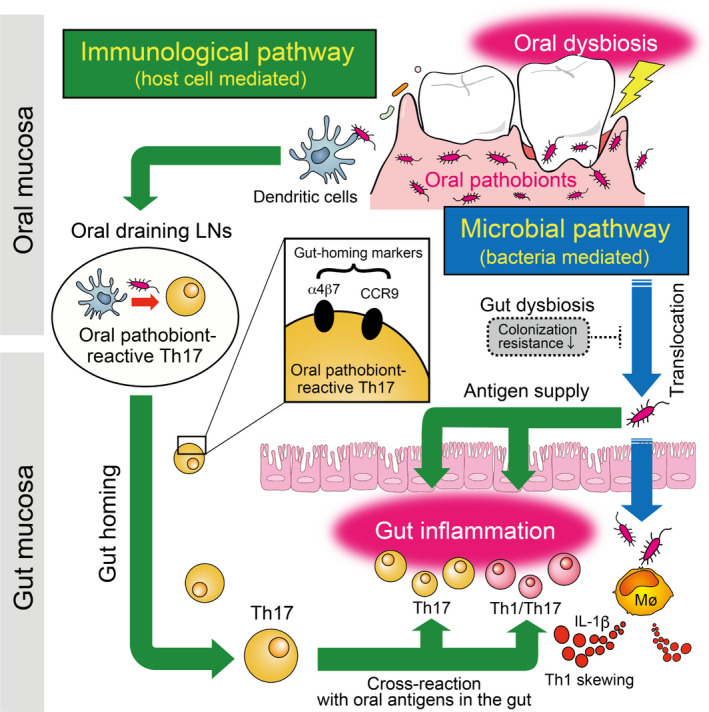FIGURE 2.

Possible mechanisms of gut inflammation mediated by transmigration of orally primed T cells to the gut (immunological pathway). In parallel with the direct translocation of oral pathobionts to the gut provoked by concurrent oral and gut dysbiosis (Figure 1, microbial pathway), the transmigration of oral immune cells to the gut also plays a key role in the mouth–gut axis during the pathogenesis of oral pathobiont‐driven colitis (ie, the immunological pathway). Mechanistically, during periodontal inflammation, orally primed Th17 cells that recognize oral pathobionts (eg, K aerogenes) are generated in the oral draining lymph nodes (LNs). Oral pathobiont‐reactive Th17 cells express gut‐homing molecules such as CCR9 and α4β7. When Th17 cells of oral origin reach the gut, they can be activated by translocated oral pathobionts and promote the development of colitis. Given the phenotypic changes of oral Th17 cells toward Th1, such as Th17 cells in the gut of mice with periodontitis and the concurrent presence of Th1 skewing factor IL‐1β (produced by intestinal macrophages exposed to oral K aerogenes, as evident in the microbial pathway, Figure 1), it is likely that the microbial and immunological pathways synergistically aggravate the intestinal pathology during the oral pathobiont‐driven gut inflammation
